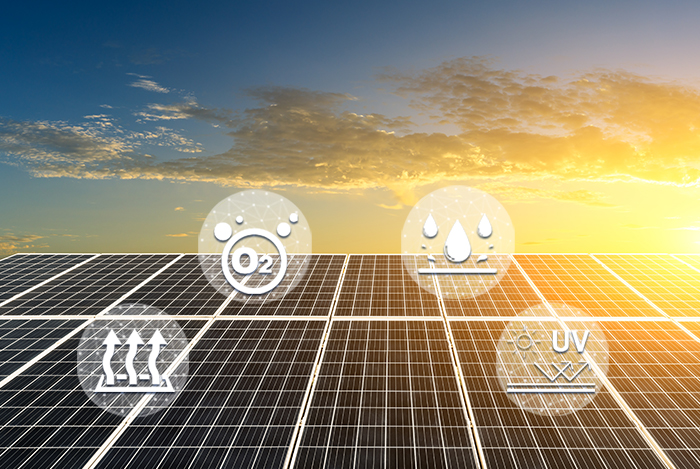The year 2024 marks a pivotal moment for the photovoltaic (PV) industry as fierce competition drives rapid advancements in cell technology and industrial applications, far surpassing the pace of a decade ago. Despite these innovations, the choice of encapsulation film—whether POE (polyolefin elastomer), EVA (ethylene-vinyl acetate copolymer), or EPE—remains a critical and widely debated topic for both glass-glass, glass-backsheet, and flexible modules.

Outdoor PV modules face degradation from four primary environmental factors: heat, oxygen, water, and ultraviolet (UV) radiation. While biological activity is negligible in these applications, the other factors play a decisive role in material selection. This article compares the performance of EVA and POE under these conditions, offering new insights and methodologies for material selection.
1. Heat
Both EVA and POE, when cross-linked, can withstand short-term exposure to temperatures around 150°C. However, EVA decomposes at temperatures above 200°C, releasing significant amounts of acetic acid, whereas POE remains stable until temperatures exceed 300°C.
2. Oxygen
At room temperature, both materials exhibit good resistance to oxidation. However, EVA contains trace amounts of free acetic acid monomers, which are prone to oxidation at elevated temperatures. In contrast, POE, composed entirely of chemically stable carbon-hydrogen bonds, requires significantly higher temperatures to react with oxygen.
3. Water
EVA's ester groups are susceptible to hydrolysis, leading to the formation of carboxyl groups that accelerate further hydrolysis and material degradation. POE, with its fully carbon-hydrogen chain, is chemically stable and unaffected by hydrolysis. Additionally, POE exhibits superior water vapor resistance, with a water vapor transmission rate (WVTR) of approximately 3 g/m2·24h at 38°C and 90% relative humidity, compared to EVA's WVTR of 25 g/m2·24h. This lower permeability enhances POE's ability to protect internal module components from moisture damage.
4. Ultraviolet Radiation
POE's all-carbon-hydrogen chain structure features strong chemical bonds—C-H bonds at 414 kJ/mol and C-C bonds at 332 kJ/mol—making them resistant to UV-induced cleavage. Conversely, EVA's ester groups contain C-O bonds with bond energies below 330 kJ/mol, which are more prone to UV degradation.
Conclusion
Among the four key factors affecting outdoor application reliability—heat, oxygen, water, and UV—POE consistently outperforms EVA. As PV cells become increasingly efficient and demand stricter reliability, POE remains the optimal choice for ensuring long-term, stable power output in outdoor environments.







